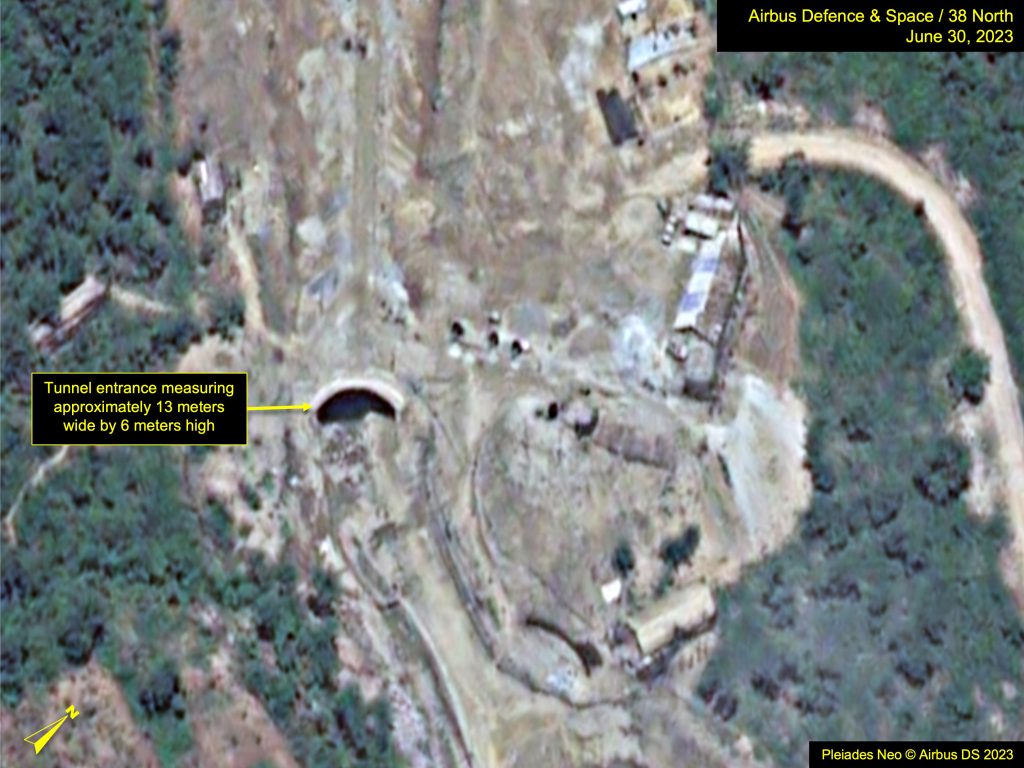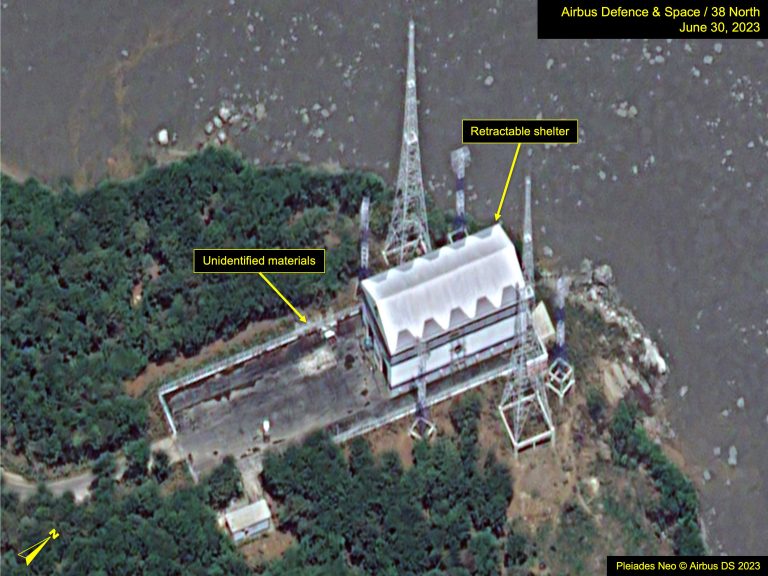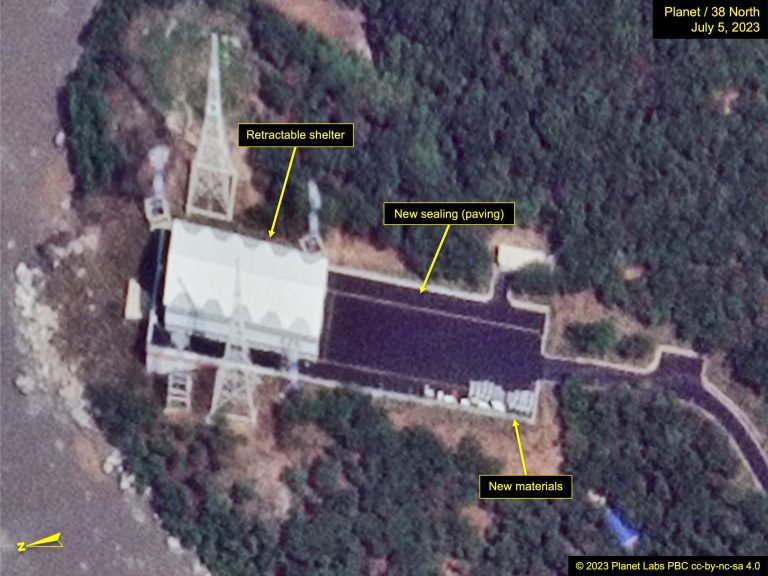Sohae Satellite Launching Station: Modernization Status
Commercial satellite imagery of the Sohae Satellite Launching Station from the past few weeks shows continued progress in the modernization and expansion of the site. Since late June, activity has continued at the Vertical and Horizontal Engine Test Stands, a new security checkpoint has been created around the coastal launch pad, and construction materials have been moved throughout the site. In addition, recent images provide a unique angle to better estimate the size of the tunnel that will connect the secure facility with the construction projects along the coast.
Vertical and Horizontal Engine Test Stands
At the Vertical Engine Test Stand (VETS), a truck crane was observed on June 30 installing new, light blue panels on the test stand itself and the retractable shelter. The crane had departed by July 5, presumably after completing the installation. The purpose of these panels is unclear but could be for maintenance or cosmetic reasons.
At the Horizontal Engine Test Stand (HETS), unidentified material and/or objects were observed next to the Horizontal Engine Test Stand (HETS) on June 30 and July 5, seemingly unmoved.
Despite the ongoing construction, the test stands remain likely operational
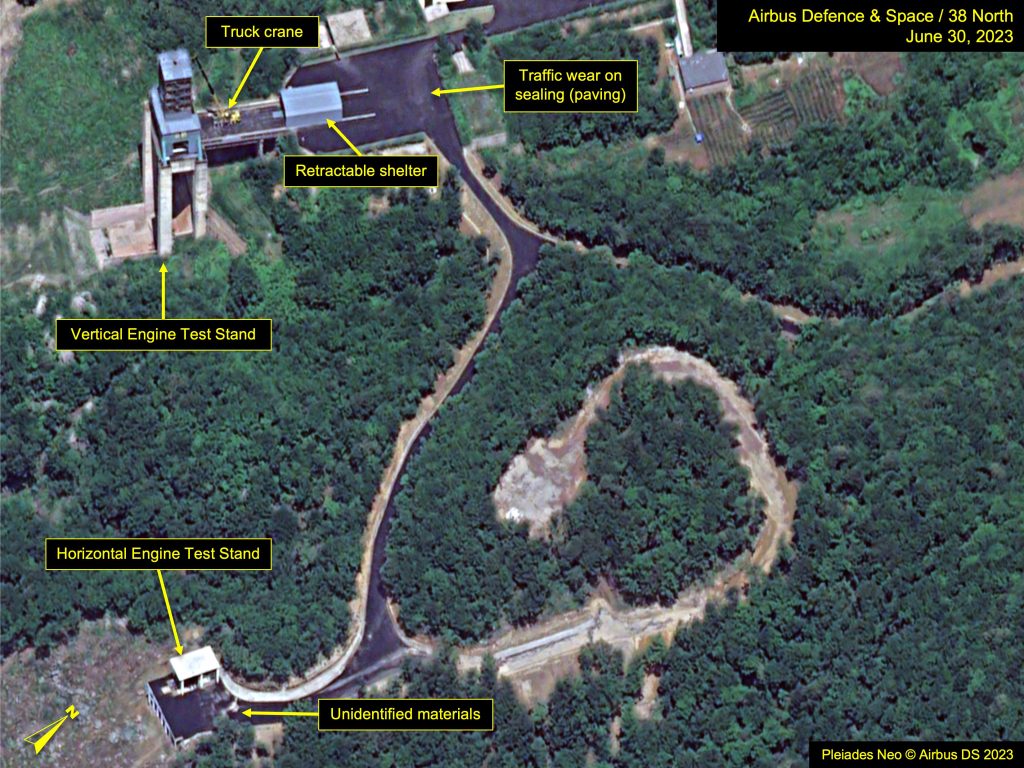
Coastal Launch Pad
Approximately 350 meters west of the coastal launch pad, a new security checkpoint or inspection point was built between June 23 and June 30. It is configured with a pull-off for the inspection area pad and lights and sensors that are likely used to verify cargo and personnel before advancing to the launch pad.
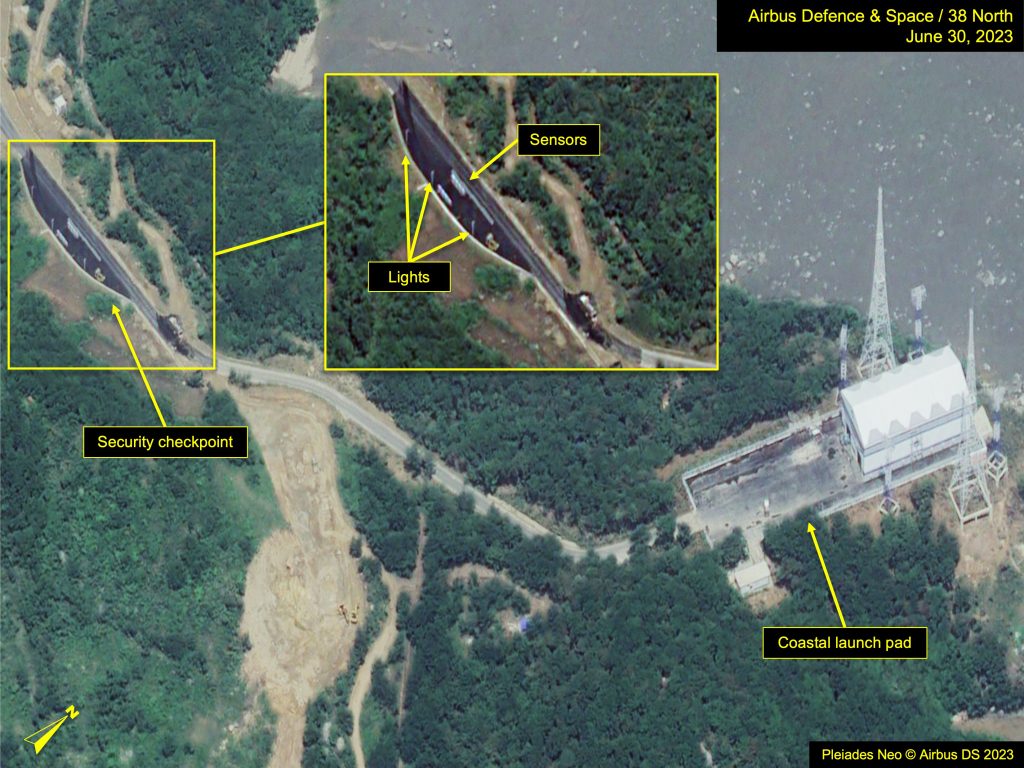
Since the recent reconnaissance satellite launch attempt, new sealant has been applied to the launch pad, as observed in imagery from July 5. Objects and materials have been brought in and moved around as well, although for what purpose is unclear due to imagery resolution and the infrequency of coverage.
Main Satellite Launch Pad
At the main satellite launch pad, the mobile transfer structure was moved away from its usual position abutting the launch preparation building on the pad in May and appears to have remained there since then. In its place are three linear objects running from the launch preparation building across one of the rails that support the transfer structure. Imagery from June 30 reveals them to be retractable loading ramps that enable launch vehicle components to be moved between the transfer structure and the launch preparation building. Since the platform of the transfer structure appears to be raised a meter or so above the tarmac because of its track wheels and carriage, the floor of the launch preparation building must also be raised to enable level movement between the structures. The loading ramps bridge the gap between these two.
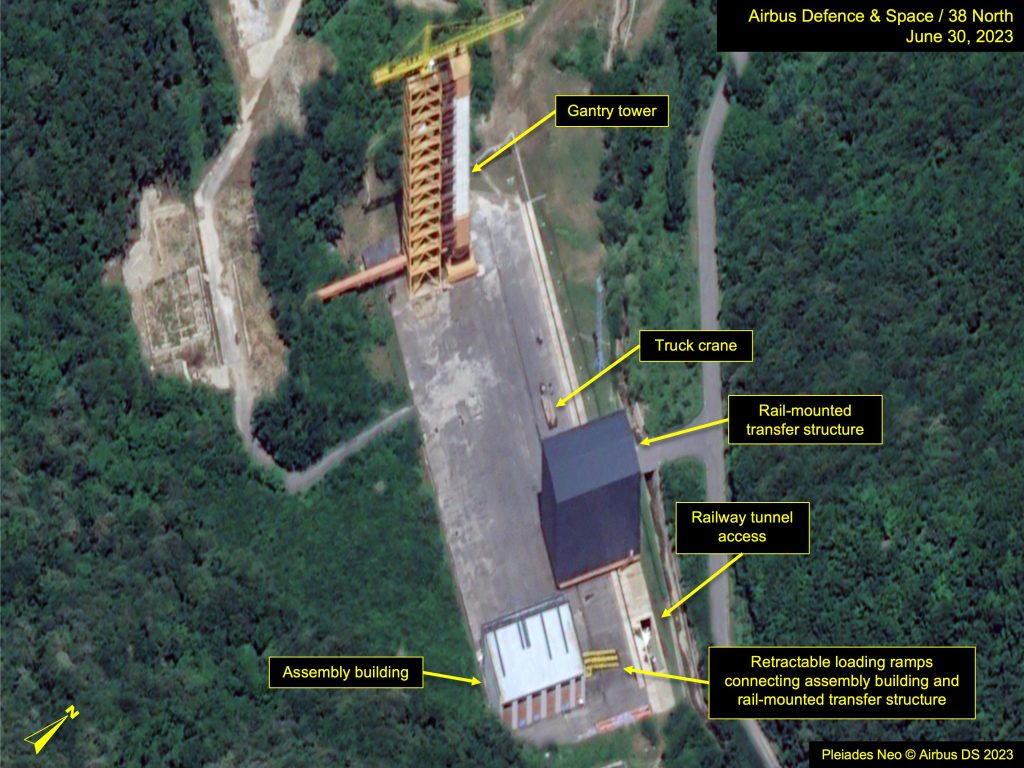
In addition to the opening on the railroad tunnel side of the transfer structure platform, there are two smaller openings on the launch preparation building side that probably provide service access to the drive unit that moves the transfer structure. That would explain why the loading ramps extend as far as they do in order to bridge moving items over those openings.
Horizontal Assembly Building
During the last few months, there has been activity around the old Horizontal Assembly Building, including vehicles moving out from the yard and materials piled in the western yard. Materials stored in the yard have been removed since late June, but where they have been directed is unclear.
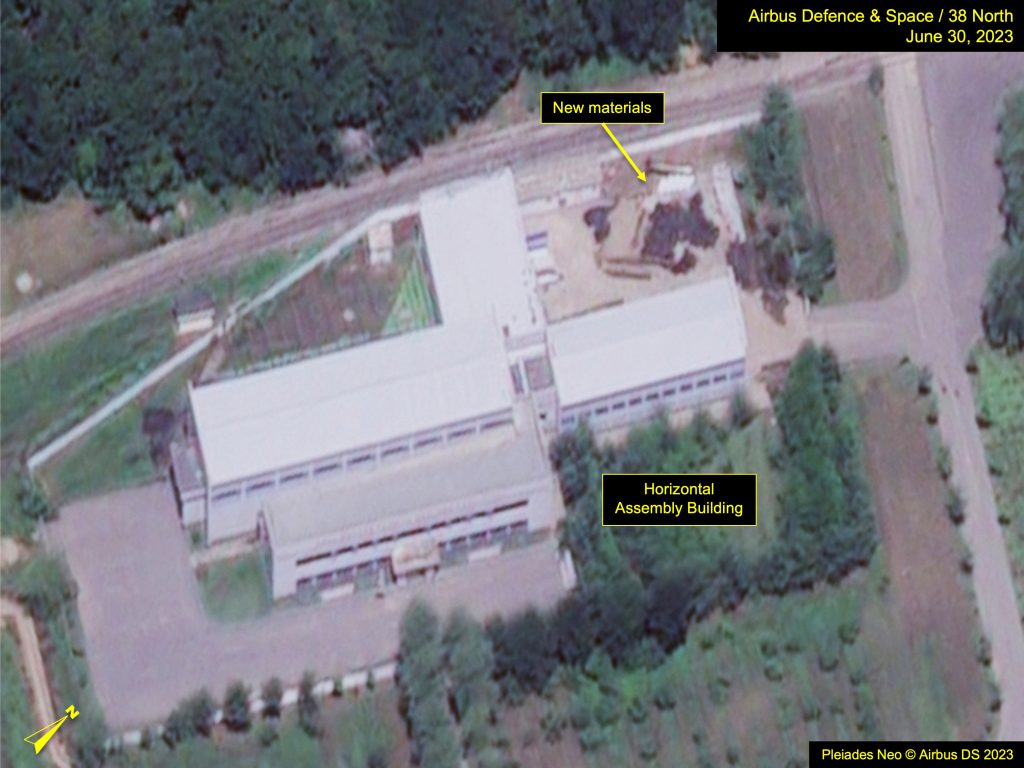
Tunnel Capacity
Imagery from June 30 provides a good view of the tunnel entrance from the east, revealing that it is a semi-circular archway approximately 13 meters wide and 6 meters high. This is a tentative estimate, however, especially regarding the height since the roadbed has not yet been prepared and could be dug deeper to increase clearance height. North Korean missile transport vehicles have been reported to reach heights of 6 meters, including the Hwasong-17 missile and its associated transporter-erector-launcher (TEL). It would be reasonable to expect the tunnel will be made deeper to be able to accommodate any rocket or launch vehicle in their current and future inventory.
The tunnel will enable transportation of equipment from the covered rail terminal and Horizontal Assembly Building to the coastal launch pad, as well as from the seaport under construction to the main launch pad area. The tunnel entrance is currently wider than a typical road or rail tunnel, which suggests it may not just be a pass-through, but also could be used for other purposes, such as protected storage or operations.
